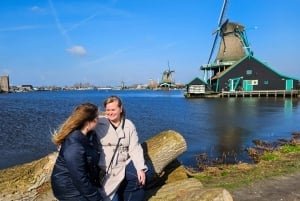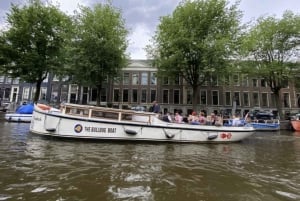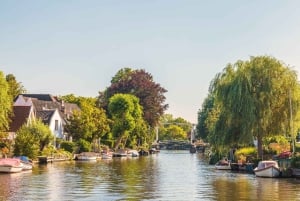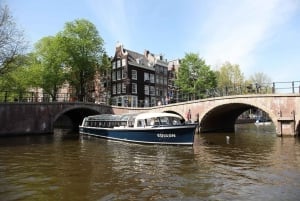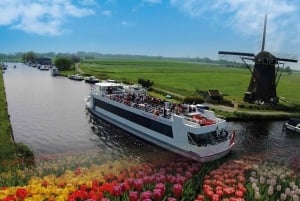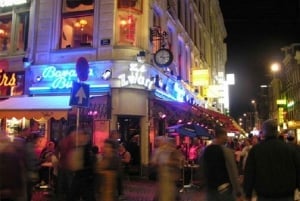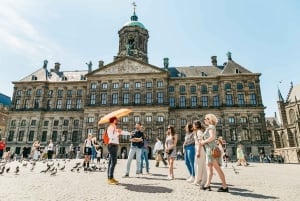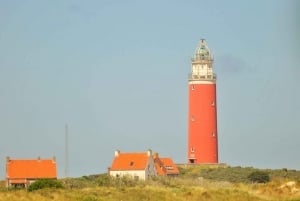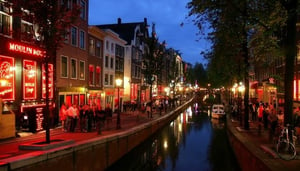Amsterdam Transport
Amsterdam is a compact city and most of the major tourist sites are all in walking distance from each other and along with cycling, walking is the best way to see the most central parts of Amsterdam. However, the public transport system is excellent, with different types of transport such as trams, buses and metro connecting all parts of the city. Sometimes after a long day walking or if it starts to rain it’s nice to take a tram back to the hotel. You can also use public transport to get to some of the less visited parts of the city. Below is an overview of the different types of transport on how best to use them.
The GVB
Founded in 1900, the GVB is the public transport company of Amsterdam and they are responsible for moving 800,000 people around Amsterdam by tram, bus metro and ferry. They do not operate the trains but the whole transport network is linked to the main railway stations around the city. For more information on the transport services of the GVB including routes, maps and prices you can have a look at the GVB website.
The OV-Chipkaart
The only way to use public transport such as trams, buses and trams in Amsterdam and the rest of Holland is with an OV-Chipkaart (Chip Card) and you have different options for this. You can buy a disposable OV-Chipkaart when entering the bus or tram or at the metro station or for convenience you can purchase an OV-Chipkaart that can be used more than one time and on the different forms of transport....Read more about using public transport with the OV chip-kaart
Trams
One of Amsterdam’s quickest and popular forms of transport is the tram. Amsterdam has an excellent tram network operating since 1916 and you are never too far away from a tram stop if you are in the centre of the city. Every tram stop has a map so you can work out exactly which lines will take you where you need to go. Of course you can walk most places in Amsterdam but to take a tram is a another fun experience if you’ve never done it before.
Using an OV-chipkaart to ride the tram is the most cost efficient way. You can also buy a 24 hour pass for €7 if you know you’ll be using it all day. Paying for a single ride will cost you €2.60. Top Tip: If you know the tram number and stop you need then make sure you are standing on the right side of the tracks as it’s all too easy to find yourself on the right tram heading in the wrong direction.
Metro
Amsterdam’s metro system is relatively recent, with the first metro lines being set up in 1977. This is probably the reason why it is still not as popular as predominant means such as trams and buses. There are four established metrolines in the city:
• 50 – Gein – Isolatorweg
• 53 – Central Station – Gaasperplas (Amsterdam Zuidoost)
• 54 – Central Station – Gein (Amsterdam Zuidoost)
Like the buses, the Metro is primarily used to reach the suburbs. Unlike the buses, they have fewer stops, despite being a quicker means of transportation. Also, in case you’re planning to enjoy a little sight-seeing while in the metro, you’re out of luck, as the metro mostly runs on underground routes within the city centre, coming overground only when it moves away from the city core. So instead of a picturesque scenery, you are instead treated to dull tunnels that pass by in a blur and freehand graffiti, which you probably won’t understand anyway, due to most of the swear words being in Dutch.
Bus
The Bus system doesn’t enjoy as much popularity as trams do, especially within the city centre. It is mainly used to travel to other suburbs of the city, although bus connections to the centre are plenty. Bus lines are most densely populated in the Northern part of Amsterdam, which is the Amsterdam-Noord district, across the harbour from the centre. The bus service is available from 6 am till midnight, although on Sundays, it starts at 7 am. After midnight, you’re likely to find nightbuses moving around the city.
Cycling
Cycling is by far the most popular means of travel in Amsterdam, especially in the city centre. There are specially constructed bike lanes meant exclusively for cycles, and it’s a cardinal sin for anyone to get in that lane as there’s a 90% chance of getting run down by an incoming cyclist. With the city centre being small enough to reach places easily, cycling is the way to go here. A cyclist is also not likely to encounter any troubles with the surface, except on some steep bridges. For hire purposes, there are several companies that offer bike rentals for about 8 euros per day, with discounts if you take longer day rentals.
Boat Tours and Canal Buses
Amsterdam’s waterways cover more than 100 km, spread across three main canals Prinsengracht, Herengracht and Keizersgracht. Boat tours are wildly popular among tourists, more so for indulgence purposes rather than transportation.
The Canal Bus is an effective service that operates along 20 stops, offering connections to notable tourist attractions like Rijksmuseum, Van Gogh Museum and Anne Frank House. It’s a hop-on hop-off service, which has a multilingual guide to provide information about Amsterdam. There are basically three routes that are followed: -
• Red Line – Central Station East, City Hall, Rijksmuseum, Anne Frank House, Leidseplein and Central Station West.
Charges for the one-hour services vary from 22 to 24 euros, although prices are subject to change.
Water Taxis
Water taxis can be booked from the dock near Central Station, or reserved in advance. They carry from 1 to 40 passengers.
Canal Bikes
This is a hire service that operates in Amsterdam and Utrecht, which are available daily from 10 in the morning to 6 in the evening, and 10 in the night during summertime. All the canal bikes are 4-seaters, some of which are also pedal boats.
Boats for Hire
In Amsterdam, there is a wide array of canal companies that provide boat rental. If you’re planning to travel around Amsterdam and happen to be in a group, this is not a bad option. You can hire boats to reach specific locations across the city. Ferry
Behind the Central Station, there are five ferries that connect the city centre with the Northern area of Amsterdam. In case you need to cross the IJ River to get to the Amsterdam-Noord district, the ferries are where you should be headed. The best part is that the entire service is entirely free of charge for pedestrians, cyclists and mopeds. They depart every 10 minutes or so from Central Station. Segway
Segway is a fun-filled experience, where you can explore the city on two-wheeler transporters that are self-balanced. Segway offers a plethora of touring options to see the sights of Amsterdam, and get to know what the city is all about. The Segway tours
start and end at the Piet Heinkade 25 (Passenger Terminal). For those who feel unsure about the means of transportation, fret not, you will be given training beforehand. The tickets cost approximately 60 euros, which include 3-hour excursions around Amsterdam, with complimentary half-hour lunch stops at cafes/bars/restaurants. Rollerblades
For those who like skating to get to places, rollerblading is the thing for you. You can rent rollerblades from the Vondelpark, from two different areas, one at Melkgroothuis and the other at the Cafe by Amstelveenseweg. Now if you’re planning to rent rollerblades, it would be a real waste not to check in on the Friday Night Skate event that is held in Vondelpark
, on Friday of course. Almost 3,000 skaters participate in the 9-mile tour through Amsterdam that starts from the Eye Film Institute and continues through the city centre.


